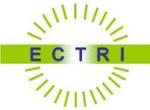| Authors: | Rebecca Jayne Thorne, Astrid Helene Amundsen, Ingrid Sundvor |
| Report nr: | 1737/2019 |
| ISBN (digital version): | 978-82-480-2285-5 |
| Language: | English |
| Attachments | Summary Full report Sammendrag |
Although most trains in Europe are powered by electricity from a third rail or overhead line, it is not always cost effective to electrify rail lines. In these cases, alternatives to diesel train population are batteries and fuel cells. Battery electric and hydrogen fuel cell technologies have developed significantly in recent years and multiple manufacturers are now investing in the development of battery electric and hydrogen fuel cell trains. Resultingly there have been an increasing number of these trains in operation, both for trials and commercial service. Changes in rail transport are not possible without the support of an adequate network, which must be highly planned. This is particularly important for hydrail, since no mass production of hydrogen for transport applications is yet in place. Nonetheless, with current focus on further implementation both in Norway and across Europe, the future is bright for these zero emission propulsion technologies.





